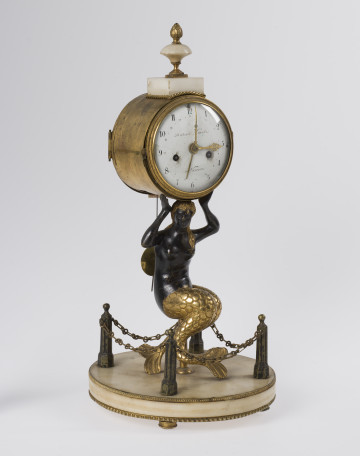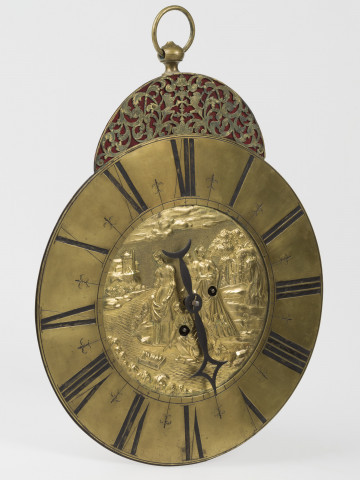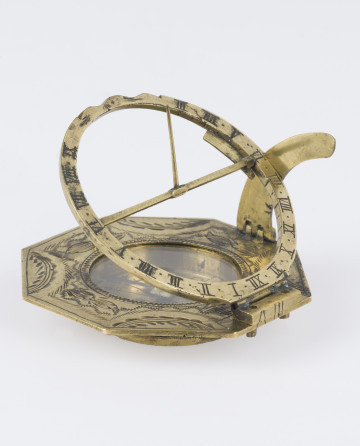
Mantel clock
Museum of King Jan III's Palace at Wilanów
Part of the collection: Clocks
The handy folding sundial is an example of equipment commonly used by travellers and sailors. It indicates the time at any latitude, regardless of the user’s location. It was invented by Peter Dolland, a designer of optical instruments, at the end of the 18th century. A correct reading of the time is obtained by adjusting the sundial to the latitude by verifying the position of the dial face by an angle called inclination, i.e. by combining the data indicated by the compass with the sundial. The sundial has a pivoting rim with hour markers and a gnomon placed on its diameter. The rim can be raised to a latitude angle indicated on a pivoting plate in the shape of an arc segment.
The indications of the compass are protected by a glass, around which the brass collar is decorated with a simple engraved ornament, with grid and wavy line motifs.
The bottom of the compass is engraved with the latitudes of European cities: Augsburg, Paris, Kraków, Prague and Leipzig, as well as the signature of the maker – Andreas Vogler.
The clock has a leather case lined inside with velvet, with a snap lock lid.
AK
Dimensions
entire object: height: 0 cm, width: 0 cm
Owner
Museum of King Jan III's Palace at Wilanów
Identification number
Location / status

Museum of King Jan III's Palace at Wilanów

Museum of King Jan III's Palace at Wilanów

Museum of King Jan III's Palace at Wilanów
DISCOVER this TOPIC
Museum of King Jan III's Palace at Wilanów
DISCOVER this PATH
Educational path